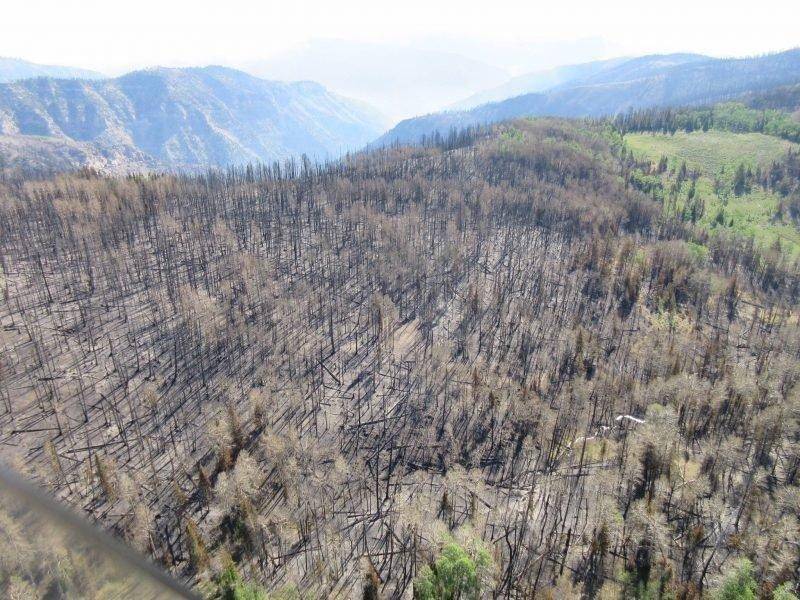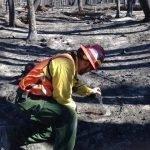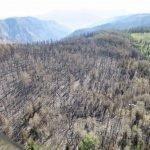Aerial reconnaissance the steep slopes and deep canyons that characterize the Huntington Canyon drainages.
Press Release
Steep slopes in Huntington Canyon have been a challenge to crews fighting the Trail Mountain Fire and now the Burned Area Emergency Response team (BAER) is looking at the threat these slopes will pose when post-fire rainstorms occur.
The slopes, combined with the loss of canopy cover, ground cover and the formation of water repellent soils, can lead to an increased watershed response to short duration, high intensity precipitation, resulting in increased run-off and erosion. Due to physical and chemical changes in burned soils, water collects on the surface of hydrophobic soils rather than soaking into the ground. Floods and debris flows are the likely result when heavy rain hits the fire damaged slopes.
Monday and Tuesday, members of the BAER team ventured onto the burned landscape and into the air to begin their assessment. They checked drainages in Huntington Canyon and Cottonwood Canyon. The reconnaissance flight showed the steep slopes, the extent of damage and deep canyons that have potential for damaging floods during storms.
The BEAR team assesses the risks and works to reduce these threats through appropriate emergency measures to protect human life and safety, property, and critical natural or cultural resources.
Manti-La Sal National Forest employees are currently building debris racks and other drainage structures in some of the drainages most impacted by the fire. They hope this early construction will help when the rain and floods come. However, these treatments cannot prevent all of the potential flooding or soil erosion impacts, especially after a wildfire changed the landscape. It is important for the public to stay informed and prepared for potentially dramatic increased run-off events.
The BAER team and Forest Service work with local cooperators who assist affected businesses, homes and landowners to prepare for rain events. Among these cooperators are Emery County and the Natural Resources Conservation Service, who are looking for ways to assist landowners in preparing for potential flooding.
It is important that landowners work directly with NRCS and other agencies to determine appropriate actions needed to protect structures and other assets.
The BAER team, which is made up of hydrologists, soil scientists, wildlife biologists, geologists, range conservationists, engineers and ecosystem specialists, is also consulting with the Utah Division of Wildlife Resources regarding impacts to wildlife habitat and fisheries.
The team’s work must be completed quickly. It has only days to make a rapid assessment of the burned area to evaluate the burned watersheds and determine the potential for increased post-fire flooding, sediment flows and rock slides that may pose an unacceptable risk to critical resource values.
The BAER team will then make a recommendation for emergency stabilization treatments that should be completed prior to the first damaging storm event.
Burned Area Emergency Response is a program of the USDA Forest Service.
- BAER team member assesses soil burn severity in the Trail Mountain Fire burned area.



